The Mikoyan-Gurevich MiG-25 “Foxbat” holds an important place in history, creating both intrigue and caution. Originating from the Soviet Union, this famed aircraft represented remarkable engineering ability and embodied Cold War dominance in the skies. Primarily designed for rapid reconnaissance and interception missions, its ability to reach astonishing speeds astounded Western nations.
Origins of the Mikoyan-Gurevich MiG-25
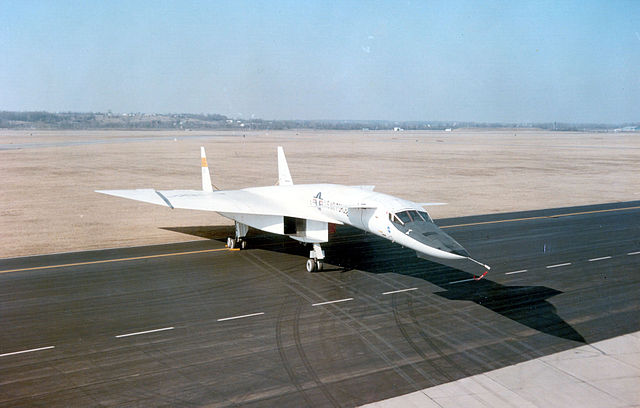
The inception of the MiG-25 arose from the urgent need to counter rapid advancements in Western aviation technology during the Cold War. This initiative began in the early 1960s, driven by Soviet military strategists who recognized the necessity of developing a reconnaissance aircraft capable of outpacing Western innovations, such as the North American XB-70 Valkyrie.
Engineers were assigned the challenge of creating an aircraft that could meet these demanding criteria. The result was a remarkable blend of speed and power, achieved through innovative design techniques and the use of materials such as nickel-steel, aluminum, and titanium. These materials played a crucial role in the MiG-25’s performance, allowing it to withstand the extreme temperatures generated at its impressive speeds.
Development was shrouded in secrecy
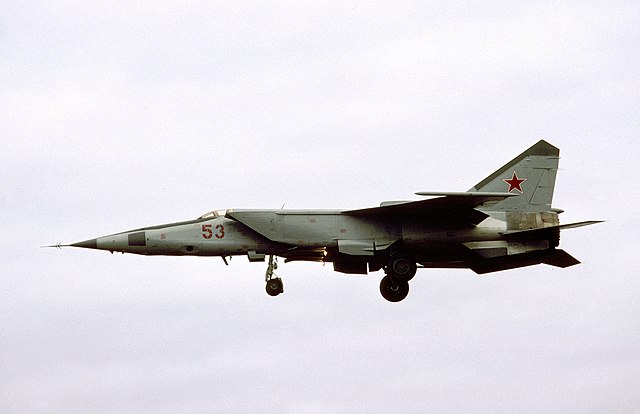
The development of the MiG-25 was shrouded in secrecy, with only a select few outside the USSR’s top military and engineering circles aware of its capabilities. This clandestine approach played to the advantage of the Soviet Air Forces, instilling fear in the West upon the aircraft’s introduction.
Various design concepts were explored for the MiG-25. One proposal involved positioning the engines side-by-side, akin to the Mikoyan-Gurevich MiG-19, while another suggested a vertical stacking, reminiscent of the English Electric Lightning. However, the notion of underwing nacelles for the engines was discarded, due to concerns about thrust asymmetry.
Additional design features, such as variable-swept wings, a second crew member and vertical takeoff and landing capabilities, were also considered, but ultimately rejected.
The prototype of the MiG-25, the Ye-155-R1, took its first flight in 1964. Through rigorous testing and refinement, it became evident the aircraft wasn’t only a reconnaissance platform, but also an interceptor, capable of reaching altitudes exceeding 80,000 feet and engaging targets at long distances with its missiles.
This dual capability highlighted the strategic significance of the MiG-25 in the Soviet defense strategy, serving as a deterrent against potential Western threats and showcasing the technological prowess of the Soviet aerospace industry.
Mikoyan MiG-25 specs.
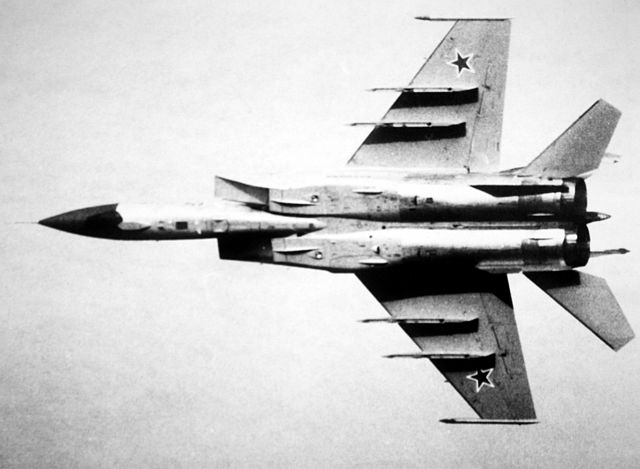
Crafted mainly for swift reconnaissance and intercepting hostile aircraft, the MiG-25 surpassed expectations with its remarkable performance capabilities. The aircraft was fundamentally engineered to surpass potential threats, achieving speeds up to Mach 2.83 propelled by twin Tumansky R-15B-300 engines. Coupled with its expansive wing area, this made it among the fastest military planes of the Cold War era and a formidable adversary capable of outmaneuvering incoming missiles.
Moreover, the MiG-25’s capabilities extended beyond speed, enabling it to ascend to altitudes exceeding 80,000 feet. This ability allowed it to operate beyond the reach of most enemy fighters and surface-to-air missiles (SAMs). Combined with its ability to carry many different kinds of reconnaissance equipment and armaments, including the strong R-40 long-range air-to-air missiles, the MiG-25 proved itself a versatile and invaluable asset.
Variants of the Mikoyan-Gurevich MiG-25
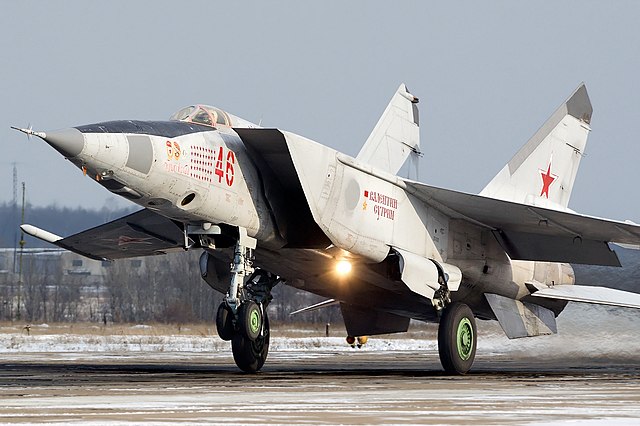
The MiG-25 spawned several variants. Among them, the MiG-25P stands out as the initial interceptor version, a testament to the aircraft’s primary mission of countering high-altitude reconnaissance flights. Its RP-25 Smerch-A1 radar and air-to-air missile systems were groundbreaking at the time of introduction, setting a new standard for air defense capabilities.
The interceptor’s prowess was complemented by reconnaissance variants, notably the MiG-25R, which took intelligence gathering to new heights – literally. Equipped with sophisticated cameras and sensors, it could easily gather data from behind enemy lines.
The MiG-25RB added a strategic bombing capability to the reconnaissance model. This variant not only conducted high-speed, high-altitude photo reconnaissance, but also engaged in electronic intelligence (ELINT) gathering and delivering strikes with conventional bombs. To ensure its abilities as a bomber, the Peleng automatic bombing system was added, which is capable of deploying eight 1,100-pound bombs.
Combat and reconnaissance missions

The MiG-25 has an operational history that’s spanned several decades and a variety of combat and reconnaissance missions. Its reconnaissance variants were among the first to provide the Soviet Union with crucial intelligence during the Cold War, flying at speeds and altitudes that made them nearly untouchable by enemy air defenses.
The aircraft’s robust design allows it to operate in environments, ranging from the scorching deserts of the Middle East to the frigid skies over Siberia, showcasing its versatility and reliability.
During the 1982 Lebanon War, MiG-25s conducted reconnaissance missions over heavily defended airspace, gathering invaluable intelligence, and many saw action against coalition aircraft during the Gulf War as part of the Iraqi Air Force. It also played a role in the Iran-Iraq War, where it was used by both sides for reconnaissance and strike missions.
Viktor Belenko defected to the United States

One of the most famous incidents involving the MiG-25 occurred in 1976, when Soviet pilot Viktor Belenko, who served with the 513th Fighter Regiment, 11th Air Army, Soviet Air Defence Forces (V-PVO), defected to the West. During a training flight, he flew to Japan, landing at Hakodate Aiport, where he was arrested for violating Japanese airspace. He subsequently requested asylum in the United States.
This provided the West with an unprecedented opportunity to examine the technology of one of the most elusive aircraft of the time, with then-Director of Central Intelligence George H.W. Bush calling the opportunity an “intelligence bonanza.” It was during this time that the West learned the MiG-25 wasn’t a fighter-bomber, like everyone had presumed, and, as such, it wasn’t really that much of a threat.
The analysis of the MiG-25 revealed its strengths and weaknesses, leading to advancements in Western military technology. The incident underscored the aircraft’s role not just in espionage, but also in the broader context of Cold War diplomacy and rivalry.
Replaced by the Mikoyan MiG-31
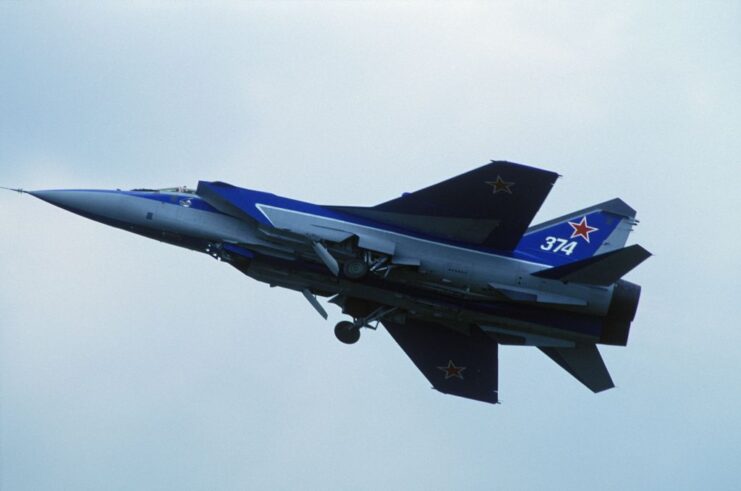
Over the decades, the MiG-25 has been operated by a number of countries outside of the Soviet Union and Russia, including Iraq, India, Syria and Lybia. Of these, Syria remains the only one to still operate the aircraft, with it reported that two “R,” 16 PD, eight RB and two PU variants were still in service as of December 2022.
More from us: A US Stealth Bomber Was Once Caught Mid-Flight On Google Maps
The MiG-25 was ultimately replaced by the Mikoyan MiG-31 “Foxhound,” which entered service in 1981 and is estimated to remain active with the Russian Aerospace Forces until at least 2030.
